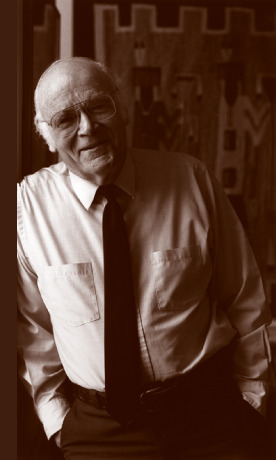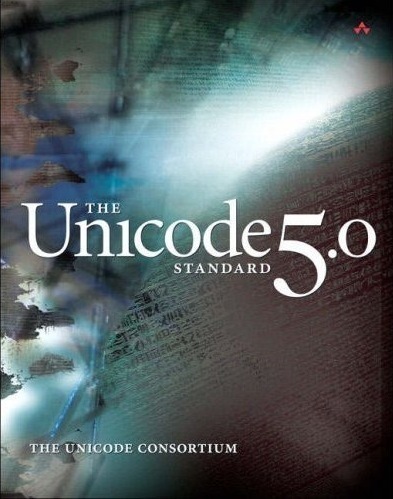Stewart Brand's Blog, page 96
October 27, 2011
A Thousand Years of Taxonomy to Go?
About ten years ago The Long Now Foundation initiated an effort to document every living organism on the planet within 25 years. The project was called All Species and while it did not make it through the dot com burst, it was continued by initiatives such as the Encyclopedia of Life and the Census of Marine Life. Because our knowledge of biological diversity of the planet is incomplete, scientists have always been uncertain of just how many species we have left to identify. Recently, however, a paper was published in the open-access biology journal of the Public Library of Science that approaches that question in a novel statistical way. The results are impressive. They indicate that the 1.2 million or so species that scientists have described to date comprise a mere 14% of the total number inhabiting our planet.
Our current estimate of ~8.7 million species narrows the range of 3 to 100 million species suggested by taxonomic experts [1] and it suggests that after 250 years of taxonomic classification only a small fraction of species on Earth (~14%) and in the ocean (~9%) have been indexed in a central database (Table 2). Closing this knowledge gap may still take a lot longer. Considering current rates of description of eukaryote species in the last 20 years (i.e., 6,200 species per year; ±811 SD; Figure 3F–3J), the average number of new species described per taxonomist's career (i.e., 24.8 species, [30]) and the estimated average cost to describe animal species (i.e., US$48,500 per species [30]) and assuming that these values remain constant and are general among taxonomic groups, describing Earth's remaining species may take as long as 1,200 years and would require 303,000 taxonomists at an approximated cost of US$364 billion. With extinction rates now exceeding natural background rates by a factor of 100 to 1,000 [31], our results also suggest that this slow advance in the description of species will lead to species becoming extinct before we know they even existed. High rates of biodiversity loss provide an urgent incentive to increase our knowledge of Earth's remaining species.
On the bright side, there are some encouraging technological advances in social media and genetic identification that are increasing the efficiency of documenting new organisms. The internet facilitates the development of grassroots or amateur scientific projects, and it more widely distributes the daunting task of identifying another seven and a half million species (a task which would otherwise be all the more daunting in light of the dwindling number of professional taxonomists). One such project, featured previously on this blog, is known as 10000 birds and aims to photograph every bird in the world, providing a public database of avian images. For the important task of genetic documentation, DNA barcoding offers an efficient way of analyzing the genetic makeup of new specimens.
With these technologies and the development of others, it may indeed be possible to achieve a comprehensive description of life on earth in a time span closer to Long Now's 25 year goal for the All Species project than the twelve centuries cited by the study above. And why develop such a catalog? Robert May of Oxford University's Zoology department wrote a compelling companion piece to the study in the Public Library of Science's journal.
[...] we increasingly recognise that such knowledge is important for full understanding of the ecological and evolutionary processes which created, and which are struggling to maintain, the diverse biological riches we are heir to. Such biodiversity is much more than beauty and wonder, important though that is. It also underpins ecosystem services that—although not counted in conventional GDP—humanity is dependent upon. [...] The essential fact is that, if we are to meet the challenges facing tomorrow's world, we need a clearer understanding of how many species there are—both on land and in the even less well-studied oceans—underpinning the structure and functioning of ecosystems.







October 26, 2011
David Eagleman Lecture at Bay Area Science Festival
Long Now Board Member David Eagleman will be speaking as part of the Bay Area Science Festival presentation "Will We Ever Understand the Brain" on Wednesday, November 2, 02011. Eagleman will discuss with Henry Markram, coordinator of the Human Brain Project, whether the myriad functions of the brain will someday be clear to us, or if they will always be somewhat of a mystery.
The lecture will take place at the California Academy of Sciences in San Francisco at 7pm. See the California Academy of Sciences' or the Bay Area Science Festival's website for details and tickets.
Eagleman is a neuroscientist at the Baylor College of Medicine as well as an author whose works include the fictional Sum: Forty Tales from the Afterlives and most recently, Incognito: The Secret Lives of the Brain.







October 21, 2011
Long Now Media Update

WATCH
Timothy Ferriss' "Accelerated Learning in Accelerated Times"
There is new media available from our monthly series, the Seminars About Long-term Thinking. Stewart Brand's summaries and audio downloads or podcasts of the talks are free to the public; Long Now members can view HD video of the Seminars and comment on them.







October 19, 2011
Long Now Media Update

LISTEN
(downloads tab)
Laura Cunningham's "Ten Millennia of California Ecology"
There is new media available from our monthly series, the Seminars About Long-term Thinking. Stewart Brand's summaries and audio downloads or podcasts of the talks are free to the public; Long Now members can view HD video of the Seminars and comment on them.







October 18, 2011
Laura Cunningham, "Ten Millennia of California Ecology"
Eco-continuity in California
A Summary by Stewart Brand
California ecology used to be much more driven by floods and fires, Cunningham said, showing with her paintings how the Great Valley would become a vast inland sea, like a huge vernal pool progressing each year from navigable water to intense flower displays to elk-grazed grassland. Lake Merritt in Oakland was a salt water inlet. On the Albany mudflats grizzly bears would tunnel into a beached humpback whale for food, joined by California condors. Every fall at the Carquinez Strait a million four-foot-long Chinook salmon headed inland to spawn.
Only 300 years ago the whole Bay Area was grasslands, routinely burned by the local Indians. There were oaks in the valleys, redwoods in the Berkeley Hills, and extensive oak savannahs inland. The hills were greener more of the year than now, with fire-freshened grass attracting elk, and native perennial grasses drawing moisture with their deep roots.
Cunningham researched the ancient landscapes using old maps, photos, paintings, scientific reports, sundry local experts, and 30 years of fieldwork. She witnessed the last wild condors feeding on a calf carcass, chasing off a golden eagle. (The condors are now back in the wild, spotted as far north as Mt. Hamilton.) To learn about the behavior and ecological effects of wolves and grizzly bears, she studied them in Yellowstone Park. (The California golden bear was enormous, up to 2,200 pounds.)
Along the Pacific shore there used to be 10-ton Steller's sea cows (extinct in 1768), a giant petrel with an 8-foot wingspan, and a flightless diving goose that ate mussels. Further back, in the Ice Ages before 12,000 years ago, the ocean was lower, and San Francisco Bay was a savannah occupied by huge bison (6 feet at the shoulder), a native full-sized horse similar to the African quagga (Cunningham shows it with quagga-like stripes), Columbian mammoths, and the giant short-faced bear (10 feet tall standing up).
For current Californians Cunningham encourages local restoration of old ecosystems, perhaps learning to live with more flood and fire. With her multi-millennial perspective, she's pretty relaxed about climate change. As much as long-term ecology is about continuity, it is about change.
[If you like these SALT talk summaries, all 100 or so of them are collected in Kindle format for $3, available here.]







October 13, 2011
Simon vs. Ehrlich, Round 2
Roger Pielke Jr. made an observation on his blog recently regarding the past decade's rapid increase in commodity prices and the classic debate between optimistic Cornucopians and pessimistic Malthusians. In 01990 ecologist Paul Ehrlich – who has spoken at The Long Now Foundation's SALT series – lost a decade-long bet to economist Julian Simon. In 01980, Simon had predicted that prices (of just about everything) would continue to fall as the human population increased. They tracked the price of five metals over the course of the next ten years, and they all became less expensive.
Since the beginning of the millennium, however, prices have risen fairly steadily. In August of 02011, The Economist noted that current prices of the five metals chosen for the Ehrlich – Simon bet exceeded 01980 prices. Had the bet lasted for three decades, rather than one, Ehrlich would have won.
What Pielke points out, however, is that if we zoom out even further and look at The Economist's records since 1845, the last decade's spike in prices could be interpreted as one more blip in a long-term trend of Cornucopian price decreases. Or is the global economy showing the first signs of a long-in-coming collapse, as predicted by Malthusians?
Long-term bets such as the $1,000 wager between Simon and Ehrlich can place people's predictions about the future out in the open for public scrutiny and comment – encouraging those who would speak to think carefully before they do so. One project of The Long Now Foundation, Long Bets, provides a forum for long-term bets and discussion. On the site, you can view current bets, place your own, or challenge someone else's prediction.







October 11, 2011
Dr. Laura Welcher at the Internationalization and Unicode Conference – October 18th
With thousands of languages and writing systems used all over the world, making computers and the web widely accessible has taken a herculean effort, with much yet to be done.
One of the main tools used in the expansion of the web's global reach is Unicode – a database of over 193,000 characters from 93 different writing systems and the standards for using and representing them.
Unicode is maintained by The Unicode Consortium, which sponsors a conference each year to share knowledge and discuss the future of Unicode.
This year the Internationalization and Unicode Conference will be held October 17th – 19th in Santa Clara, CA.
Long Now's Dr. Laura Welcher will be delivering a keynote presentation on Tuesday October 18th of her work on The Rosetta Project, a publicly accessible digital library of human languages, and The Language Commons:
The Rosetta Project shares the Unicode vision of a world where people can use communication technology on their own terms – in their own language.
According to World Internet Statistics, over 80% of all web communication is in about ten languages, with over half in either English or Chinese. The remaining 20% represent "everyone else" including about 400 languages with speaker populations above 1 million, which collectively comprise about 95% of everyone on earth.
Because of essential technologies like Unicode, we are poised to see this breadth of human languages flourish online and on mobile devices, providing for these languages a critical new domain of language use in the modern world. I will present several efforts underway at The Rosetta Project including the "Language Commons" that rely on Unicode as an essential technology in building the multilingual Web.







October 5, 2011
Farewell Roger

On September 30th 02011 Long Now lost of one of our own, emeritus board member Roger Kennedy. Roger came to Long Now while we were trying to find a Clock site back in 01998. He jumped in immediately leading us on amazing road trips throughout the south west. His knowledge of ancient America was beyond encyclopedic, and his joy of the high desert contagious. Roger's direct guidance led us to the limestone cliffs and ancient bristlecones of Mt Washington near the Great Basin National Park, a site we eventually purchased. Roger's generosity and sage wisdom will be missed always. Farewell Roger.
National Parks Traveler Obituary







September 29, 2011
Beyond 10,000 AD
Long Now encourages a 10,000 year perspective, but if that just isn't enough zeroes for you, check out FutureTimeline.net, a site that literally goes Beyond 10,000:
Welcome to the future! Here you will find a speculative timeline of future history. Part fact and part fiction, the timeline is based on detailed research that includes analysis of current trends, projected long-term environmental changes, advances in technology such as Moore's Law, future medical breakthroughs, and the evolving geopolitical landscape. Where possible, references have been provided to support the predictions. FutureTimeline.net is intended to be an ongoing, collaborative project that is open for discussion – we welcome ideas from scientists, futurists, inventors, writers and anyone else interested in the future of our world.
As a resource for science, technology and futures thinking, the site is chockfull of links and ideas. Just as an example, did you know that in about 3,000,000,000 AD, our own Milky Way may begin to merge with Andromeda?







September 27, 2011
Laura Cunningham Ticket Info
The Long Now Foundation's monthly
Seminars About Long-term Thinking

Laura Cunningham on "Ten Millennia of California Ecology"
TICKETS
Monday October 17, 02011 at 7:30pm Cowell Theater at Fort Mason
Long Now Members can reserve 2 seats, join today! • General Tickets $10
About this Seminar:
Ecologically, the past is always present if you know where and how to look. Paleontologist-biologist-artist Laura Cunningham spent 20 years exploring California's archives and relic lands to reconstruct exactly what life used to look like here over the past 10,000 years. Her beautiful images and her insights about long-period ecological change are collected in her new book, A STATE OF CHANGE: Forgotten Landscapes of California.
Like many regions, California is busy restoring portions of the natural environment to previous conditions—native meadows, riparian woodlands, salt marshes, old-growth forests, along with the animals that used to populate them. But there is no static past to restore TO. With Cunningham's guidance we can choose to restore to a particular period: say, before the white invasion; or, during the Medieval Warm Period; or, before the human invasion; or, during the Ice Ages. With her inspiration, we can begin to envisage the ecological changes coming over the next 10,000 years.
Twitter - up to the minute info on tickets and events
Long Now Blog – daily updates on events and ideas
Facebook – stay in touch through our fan page
Long Now Meetups - join one or start your own







Stewart Brand's Blog
- Stewart Brand's profile
- 291 followers








